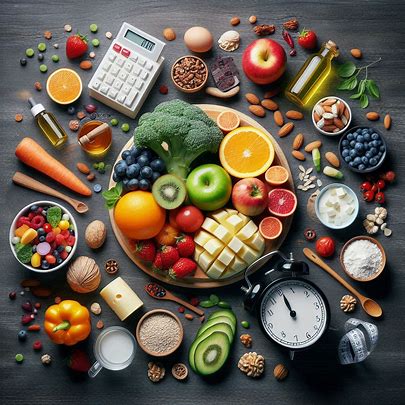Introduction
In today’s fast-paced world, maintaining good health is more important than ever, and a balanced diet is the cornerstone of a healthy lifestyle. A balanced diet provides the body with essential nutrients, energy, and sustenance to function optimally, supporting physical health, mental well-being, and disease prevention. But what exactly is a balanced diet, and how can you incorporate it into your daily life? This article explores the components, benefits, and practical applications of a balanced diet, offering insights into the latest trends and actionable tips to help you nourish your body effectively.
What is a Balanced Diet?
A balanced diet includes a variety of foods in appropriate proportions to meet the body’s nutritional needs. It supplies essential macronutrients—carbohydrates, proteins, and fats—as well as micronutrients like vitamins and minerals. The goal is to consume foods from all major food groups in the right amounts to support growth, repair, and overall health without excess or deficiency.
Key Components of a Balanced Diet
- Carbohydrates: Carbohydrates are the body’s primary energy source. Complex carbohydrates, such as whole grains (brown rice, quinoa, oats), provide sustained energy and fiber, which aids digestion. Simple carbohydrates, like those in fruits, are also beneficial but should be consumed in moderation to avoid blood sugar spikes.
- Proteins: Proteins are essential for building and repairing tissues, supporting immune function, and producing enzymes and hormones. Sources include lean meats, fish, eggs, dairy, legumes, tofu, and nuts. Plant-based proteins are gaining popularity due to their sustainability and health benefits.
- Fats: Healthy fats, such as those found in avocados, nuts, seeds, olive oil, and fatty fish (like salmon), support brain health, hormone production, and nutrient absorption. Limit saturated fats (found in red meat and processed foods) and avoid trans fats.
- Vitamins and Minerals: These micronutrients are vital for various bodily functions. For example, vitamin C (found in citrus fruits) boosts immunity, calcium (in dairy or fortified plant milk) strengthens bones, and iron (in spinach or lean meats) supports oxygen transport in the blood.
- Fiber: Found in fruits, vegetables, whole grains, and legumes, fiber promotes digestive health, regulates blood sugar, and supports heart health.
- Water: Hydration is a critical yet often overlooked component of a balanced diet. Water supports every bodily function, from temperature regulation to nutrient transport.
Benefits of a Balanced Diet
A balanced diet offers numerous benefits that enhance both short-term and long-term health.
Physical Health
Eating a variety of nutrient-rich foods strengthens the immune system, reduces the risk of chronic diseases like heart disease, diabetes, and obesity, and promotes healthy weight management. For instance, a diet rich in fruits and vegetables provides antioxidants that combat inflammation, while omega-3 fatty acids from fish lower cholesterol levels.
Mental Well-being
The food we eat impacts our brain health. Nutrient deficiencies, such as low levels of omega-3s or B vitamins, can contribute to mood disorders like depression or anxiety. A balanced diet with foods like berries, nuts, and whole grains supports cognitive function and emotional stability.
Energy and Performance
A balanced diet fuels the body for daily activities. For example, athletes who consume adequate carbohydrates and proteins experience improved endurance and muscle recovery. Even for non-athletes, balanced meals prevent energy crashes and enhance productivity.
Latest Trends in Balanced Diets
The concept of a balanced diet evolves with scientific advancements and cultural shifts. Here are some current trends shaping how people approach nutrition in 2025:
Plant-Based Eating
Plant-based diets, including vegetarian and vegan lifestyles, are on the rise due to their health and environmental benefits. These diets emphasize vegetables, legumes, and grains while reducing reliance on animal products. For example, a vegan meal might include a quinoa and black bean bowl with avocado and leafy greens, providing a complete protein profile.
Personalized Nutrition
Advances in technology, such as genetic testing and wearable health devices, allow individuals to tailor their diets to their unique needs. For instance, some people may require more iron due to genetic predispositions, while others might benefit from low-carb diets based on their metabolic profiles.
Sustainable Food Choices
Sustainability is a growing concern, with many opting for locally sourced, organic, or regenerative agriculture products. These choices reduce environmental impact while ensuring nutrient-dense foods. Farmers’ markets and community-supported agriculture (CSA) programs are popular ways to access such foods.
Functional Foods
Foods fortified with additional nutrients, like probiotic-rich yogurt or vitamin-D-enhanced mushrooms, are gaining traction. These “functional foods” offer specific health benefits, such as improved gut health or stronger immunity.
Practical Tips for Adopting a Balanced Diet
Incorporating a balanced diet into your life doesn’t have to be overwhelming. Here are practical steps to get started:
Plan Your Meals
Meal planning ensures you include a variety of food groups. For example, a balanced plate might consist of half vegetables and fruits, a quarter whole grains, and a quarter lean protein, with a drizzle of healthy fat like olive oil.
Read Nutrition Labels
Check labels for added sugars, sodium, and unhealthy fats. Choose products with minimal processing and recognizable ingredients.
Cook at Home
Preparing meals at home gives you control over ingredients and portion sizes. Try simple recipes like a grilled chicken salad with mixed greens, quinoa, and a lemon-tahini dressing.
Practice Portion Control
Use smaller plates or follow portion guidelines, such as a palm-sized serving of protein or a fist-sized serving of vegetables, to avoid overeating.
Stay Consistent but Flexible
Aim for balance over the course of a week rather than every meal. If you indulge in a treat, balance it with nutrient-dense meals later.
Real-World Applications
A balanced diet can be adapted to various lifestyles and needs. For example:
- Busy Professionals: Pack portable, balanced snacks like apple slices with almond butter or Greek yogurt with berries to stay energized during long workdays.
- Families: Involve children in meal prep to teach them about healthy eating. A fun, balanced meal could be whole-grain pita pizzas topped with veggies and lean protein.
- Athletes: Prioritize pre- and post-workout meals, such as oatmeal with fruit before training and a protein shake with spinach afterward.
Challenges and Solutions
Adopting a balanced diet can come with challenges, such as time constraints or budget limitations. To overcome these, batch-cook meals on weekends, buy seasonal produce to save money, and explore affordable protein sources like lentils or eggs. Additionally, cultural or dietary restrictions can be accommodated by substituting ingredients—swap dairy for plant-based milk or use spices to enhance flavor without extra salt.
Image: A Balanced Meal Plate
This image shows a vibrant, balanced meal with colorful vegetables, lean protein, and whole grains, illustrating the principles of a balanced diet.
Conclusion
A balanced diet is a powerful tool for achieving and maintaining optimal health. By incorporating a variety of nutrient-rich foods, staying hydrated, and adapting to modern trends like plant-based eating or personalized nutrition, you can nourish your body and mind effectively. Start small with practical steps like meal planning and portion control, and embrace flexibility to make healthy eating sustainable. With commitment and awareness, a balanced diet can transform your well-being, helping you thrive in today’s dynamic world.





